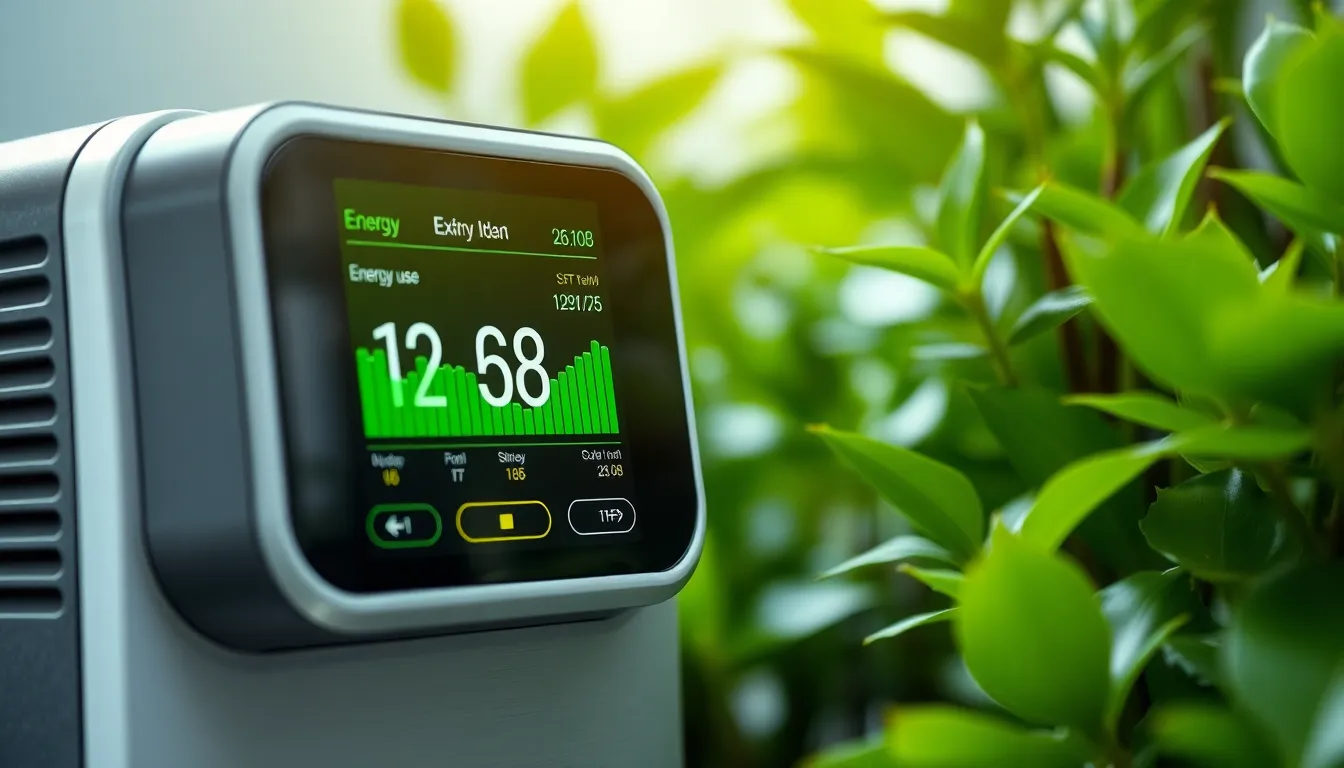In today’s interconnected world, the Internet of Things (IoT) is revolutionizing how devices communicate and operate. As more smart devices populate homes and industries, effective power management becomes crucial. Efficiently managing energy consumption not only extends device lifespan but also enhances overall system performance.
IoT power management encompasses a range of strategies and technologies designed to optimize energy use across networks. By leveraging smart algorithms and real-time data, organizations can minimize waste and reduce costs. As the demand for sustainable solutions grows, understanding the intricacies of IoT power management is essential for businesses aiming to stay competitive in this dynamic landscape.
Table of Contents
ToggleOverview of IoT Power Management
IoT power management encompasses techniques and technologies that optimize energy consumption in connected devices. As the number of smart devices increases, effective power management becomes critical for enhancing device longevity and system performance.
Key Components of IoT Power Management
- Energy Harvesting: This involves capturing energy from environmental sources, such as solar and thermal energy, to power devices. Energy harvesting reduces reliance on batteries and extends operational time.
- Smart Algorithms: Algorithms facilitate real-time monitoring and control of power usage. These algorithms analyze data from devices to adjust energy consumption dynamically, preventing waste and optimizing efficiency.
- Low-Power Protocols: Communication protocols like MQTT and CoAP are designed for low-energy consumption. These protocols allow devices to communicate effectively while drawing minimal power, enhancing overall system reliability.
Strategies for Efficient Power Management
- Sleep Modes: Implementing sleep modes allows devices to enter low-power states when inactive. This strategy decreases power consumption significantly during idle periods.
- Demand Response: Demand response systems enable devices to adjust their energy use based on grid conditions. By shifting power consumption to off-peak times, devices can take advantage of lower energy costs and reduce overall strain on the electrical grid.
- Data Analytics: Analyzing energy consumption patterns provides insights into usage trends. Businesses can leverage this data to identify inefficiencies and implement corrective measures, enhancing power management efforts.
Monitoring and Control Systems
- Energy Management Systems (EMS): These systems monitor energy use across networks of devices. EMS solutions allow businesses to visualize consumption, predict future energy needs, and implement energy-saving strategies.
- Remote Monitoring: Remote monitoring solutions enable real-time observation of energy consumption across devices. This capability allows for prompt adjustments and increases operational efficiency by reducing unnecessary power use.
Benefits of IoT Power Management
- Cost Savings: Intelligent power management leads to lower utility bills and reduced operational costs. Efficient use of energy resources can save businesses substantial amounts over time.
- Sustainability: Enhanced energy efficiency contributes to sustainability goals. Businesses can reduce their carbon footprint and align with regulatory standards through effective power management.
- Improved Device Performance: Proper power management ensures devices operate at optimal levels, enhancing reliability and user satisfaction. Devices with efficient power usage can provide better service over their lifespan.
Importance of Power Management in IoT

Power management plays a crucial role in the efficiency and sustainability of Internet of Things (IoT) devices. Effective power management maximizes energy utilization while minimizing waste, ensuring optimal performance throughout a device’s lifecycle.
Energy Efficiency
Energy efficiency directly impacts the operational effectiveness of IoT devices. Efficient algorithms enable smart devices to enter low-power states during inactivity, reducing overall energy consumption. Technologies such as energy harvesting harness ambient energy sources, providing a sustainable alternative to traditional power systems. Low-power communication protocols, like LoRaWAN and Zigbee, transmit data with minimal power requirements, further enhancing energy efficiency. By implementing these strategies, organizations decrease carbon footprints while promoting longer-lasting devices.
Cost Reductions
Implementing power management strategies leads to significant cost reductions for businesses. Reduced energy consumption translates to lower utility bills, enhancing profitability. Optimized power management minimizes the need for frequent battery replacements, resulting in decreased operational costs. Data analytics in power management systems can identify energy waste, enabling informed decisions that drive down expenses. These cost efficiencies are vital for companies striving to maintain competitiveness in a rapidly evolving market.
Key Technologies in IoT Power Management
IoT power management employs various technologies to enhance efficiency and minimize energy consumption. Key components include battery management systems and energy harvesting techniques that optimize the lifecycle and sustainability of devices.
Battery Management Systems
Battery management systems (BMS) regulate the performance and safety of battery-operated devices. BMS technologies monitor battery health, charge levels, and temperature to prolong battery life and ensure safe operation. By using advanced algorithms, BMS can predict energy needs, optimizing charging cycles and maintaining efficient power distribution. Features like voltage balancing among cells improve overall battery performance and reduce degradation. Real-time data analysis enables timely alerts for maintenance, enhancing operational reliability.
Energy Harvesting Techniques
Energy harvesting techniques capture ambient energy from various sources to power IoT devices sustainably. Common methods include solar, thermal, and kinetic energy harvesting.
| Harvesting Method | Description | Applications |
|---|---|---|
| Solar | Converts sunlight into electricity | Wearables, sensors |
| Thermal | Utilizes temperature differences for power | Industrial sensors |
| Kinetic | Generates power from motion | Smart cities, fitness trackers |
These techniques reduce reliance on traditional power sources and extend device operation without frequent battery changes. Efficient energy harvesting contributes to a robust, low-maintenance IoT ecosystem by enhancing operational uptime and reducing environmental impact.
Challenges in IoT Power Management
Numerous challenges arise in IoT power management as the number of connected devices continues to grow. Addressing scalability and security is critical for efficient operations across varied environments.
Scalability Issues
Scalability presents significant hurdles in IoT power management. Managing energy consumption across a large number of devices complicates efficiency efforts.
- Device Diversity: IoT devices vary in power requirements, making uniform power management difficult. Different sensors and actuators demand tailored strategies.
- Network Complexity: Increased devices create intricate networks. More connections may lead to higher latency in communication and power management operations.
- Real-Time Data Handling: As device numbers rise, processing real-time data becomes challenging. Efficient algorithms must adapt quickly to ensure timely energy utilization.
- Infrastructure Strain: Expanding IoT deployments can overload existing power infrastructure. Enhanced grids must support additional power load without compromising performance.
Security Concerns
Security remains a paramount concern in IoT power management. Vulnerabilities in devices can lead to energy misuse and data breaches.
- Data Privacy: Energy management systems rely on data analytics. Any breach in data privacy can expose sensitive information, leading to potential misuse.
- Device Manipulation: Hackers can compromise devices, manipulating power states and causing inefficient energy consumption. Ensuring strong security measures is crucial to prevent unauthorized access.
- Firmware Vulnerabilities: Outdated firmware in IoT devices creates risks. Regular updates are necessary to protect against security threats that exploit known weaknesses.
- Framework Integration: Integrating power management frameworks with existing security protocols can be cumbersome. Effective synchronization is essential to minimize risks and maintain operational efficiency.
Future Trends in IoT Power Management
Future trends in IoT power management point towards significant advancements driven by technology and innovation. These developments focus on enhancing energy efficiency and sustainability, integral for the growing number of connected devices.
Smart Grids and IoT
Smart grids incorporate IoT technology to optimize energy distribution and consumption. They enable real-time monitoring and management of electricity flow, adapting to changing demands. Smart sensors gather data on energy usage across connected devices, providing insights that inform grid operations. Integration of renewable energy sources, such as solar and wind, becomes seamless with IoT. Smart grids enhance reliability, reduce outages, and promote decentralized power generation, allowing consumers to contribute surplus energy back into the grid, thus creating a more resilient energy ecosystem.
Advanced Power Analytics
Advanced power analytics utilize machine learning and artificial intelligence to analyze energy consumption patterns within IoT networks. These systems identify inefficiencies and forecast energy needs, facilitating proactive power management decisions. By leveraging historical data, organizations can optimize resource allocation and implement dynamic pricing models that adjust rates based on real-time demand. Predictive maintenance becomes possible, identifying potential failures before they occur, reducing downtime and maintenance costs. Advanced analytics empower businesses to drive sustainability initiatives while maximizing energy efficiency across their operations.
The significance of IoT power management cannot be overstated. As smart devices become more prevalent the need for effective energy strategies is critical for maintaining performance and sustainability. By adopting innovative technologies and smart algorithms organizations can optimize energy consumption and reduce costs while enhancing device longevity.
Embracing advanced power management techniques not only addresses scalability and security challenges but also positions businesses to thrive in a competitive landscape. The future of IoT power management lies in continuous innovation and adaptation, paving the way for a more energy-efficient and sustainable connected world.



